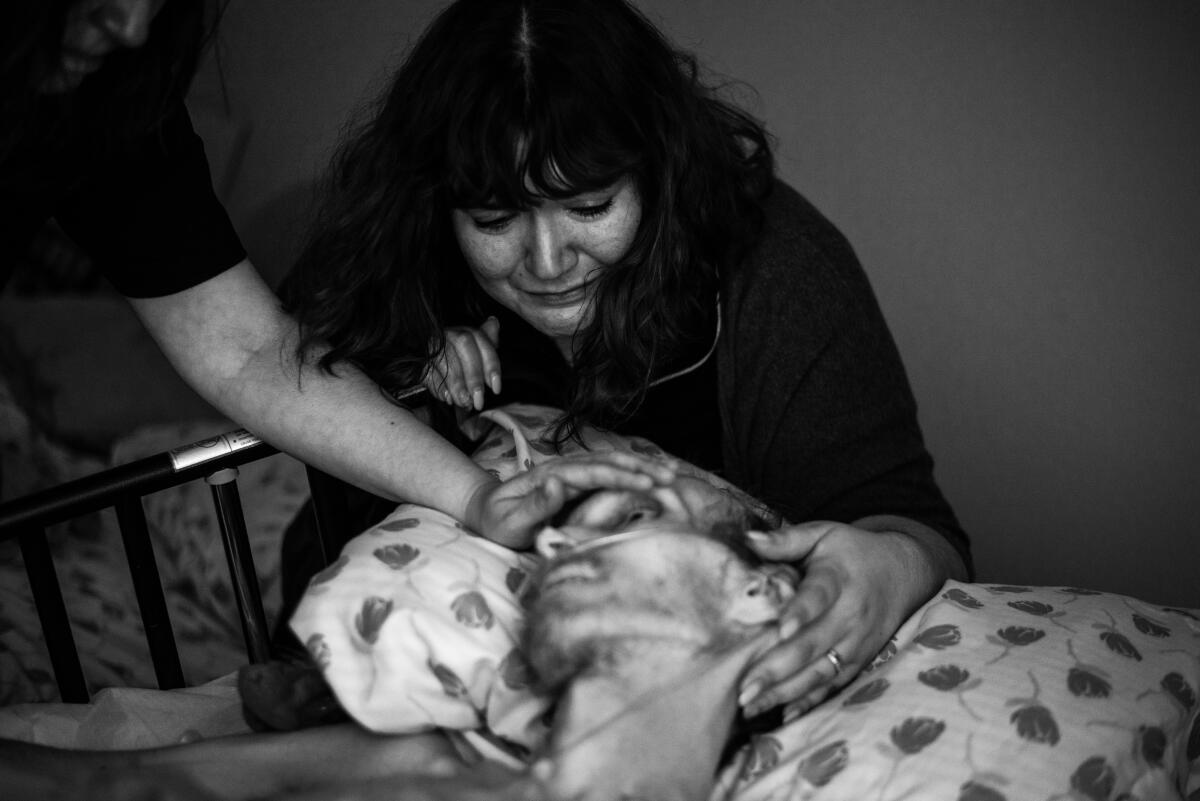Editorial: It’s cruel to force dying people through bureaucratic hoops to end their pain

- Share via
California’s medical aid-in-dying law gives terminally ill patients the right and ability to control how their lives will end — but only after they jump through a gantlet of hoops that would exhaust even someone not suffering from a fatal disease or condition.
In fact, it takes 13 steps to obtain life-ending medication under California’s 5-year-old End of Life Option Act, beginning with finding two different doctors who will help. Not all will. The law allows doctors and entire health systems to opt out of helping suffering patients hasten their death.
Patients must also make two requests orally, 15 days apart, for help to end their life. It takes weeks, if not months, to be deemed mentally competent and sufficiently sick to qualify for a life-ending medication. Not surprisingly, some people who seek the means to end their suffering never get the chance to do so.
Of course, it’s important to ensure that patients are making the decision of their own free will before taking this action, but it’s cruel to prolong the suffering of someone who’s about to die.
That’s why advocates of the law want to shorten the process in cases in which someone may die before obtaining the final sign-off. The change is part of a bill by state Sen. Susan Talamantes Eggman (D-Stockton) that would allow but not require a physician to waive the 15-day waiting period between oral requests for people truly close to death.
It’s a totally reasonable change, as there’s no science to the two-weeks-and-a-day waiting period. In fact, Oregon amended its Death with Dignity law this way two years ago. Plenty of guardrails would remain in place to ensure that the patient is making the decision rationally and freely. Eligible patients will still have to get the consent of two doctors and make two requests orally as well as one in writing that is signed, dated and witnessed by two adults before they are given a prescription.
Eggman’s bill would make other improvements to the End of Life Option Act, such as requiring healthcare systems to provide information about the law to patients even if they don’t participate and prohibiting them from gagging their doctors from talking about the law with patients. But most notably, the bill would make the law permanent. Otherwise, it would end on Dec. 31, 2025. There’s no reason not to do so; the law has worked as intended, with not a single reported case of coercion or abuse, according to the author. Indeed, it has been modestly used, mostly by cancer patients.
But that doesn’t mean it can’t work better, and the changes proposed would do so by making it easier for those who are dying to end their lives on their own terms.
More to Read
A cure for the common opinion
Get thought-provoking perspectives with our weekly newsletter.
You may occasionally receive promotional content from the Los Angeles Times.










